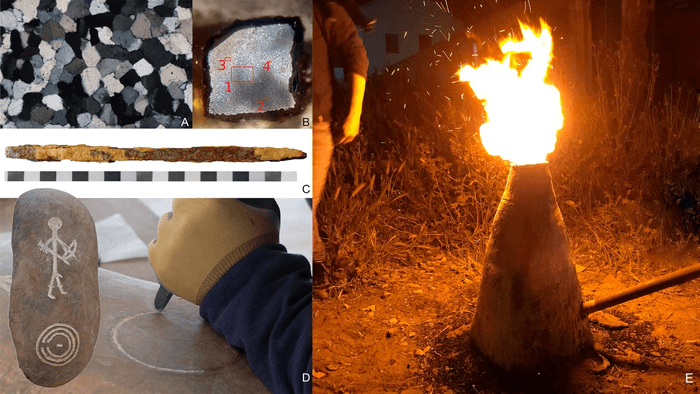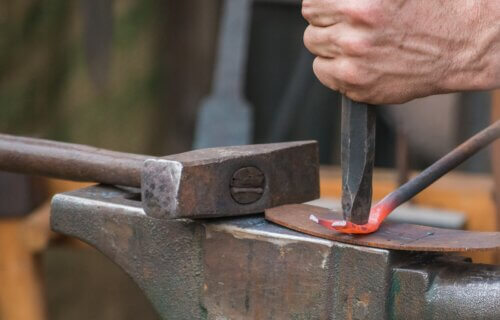BREISGAU, Germany — Despite being called the Bronze Age, early Europeans seem to have been living in the age of steel. Researchers in Germany, looking at ancient engravings from the Iberian Peninsula, believe that these artifacts were carved using tempered steel. Moreover, an iron chisel from Portugal that dates back roughly 2,900 years seems to confirm these history-changing findings.
“The chisel from Rocha do Vigio and the context where it was found show that iron metallurgy including the production and tempering of steel were probably indigenous developments of decentralized small communities in Iberia, and not due to the influence of later colonization processes. This also has consequences for the archaeological assessment of iron metallurgy and quartzite sculptures in other regions of the world,” explains Ralph Araque Gonzalez, a researcher from the Institute of Archaeology at the University of Freiburg in Germany, in a media release.
Before this study, historians assumed there was no way people had the means and know-how to create first-rate steel in the Early Iron Age, let alone the Final Bronze Age. The knowledge of making steel weapons was thought to have become commonplace during the reign of the Roman Empire.
The Iberian Peninsula has an incomplete archaeological record of the Late Bronze Age (1300-800 BCE). There is little proof of past settlements, and any uncovered burials in the area leave no trace of metal hoarding or mining remains. The only slab of proof suggesting iron tool use comes from drawings of animals, humans, and objects on rocks.

The team looked at the geological composition of the complex stone carvings dating back to the Final Bronze Age and found that a number of them were not from quartzite but actually silicate quartz sandstone.
“Just like quartzite, this is an extremely hard rock that cannot be worked with bronze or stone tools, but only with tempered steel,” says Araque Gonzalez.
Adding to the evidence is a metallographic analysis of an iron chisel from 900 BCE in the same region of Portugal. The tool contained a carbon content similar to carbon-rich steel. The researchers also recruited a professional stonemason, blacksmith, and a bronze caster to work on the rock with chisels made from several materials.
The stone was not engravable using stone or bronze chisels. An iron chisel also proved ineffective if it had an untempered point. Only the chisel created from tempered steel had the power to engrave the stones.
“The people of the Final Bronze Age in Iberia were capable of tempering steel. Otherwise they would not have been able to work the stelae,” concludes Araque Gonzalez.
The study is published in the Journal of Archaeological Science.
You might also be interested in:
- Amazing archaeological finds dating back to 10,000 BC unearthed just 8 miles from Stonehenge
- Bronze Age rave? Scientists find evidence Europeans used hallucinogenic drugs 3,000 years ago
- Earliest known stone tools likely tens of thousands of years older than previously believed

